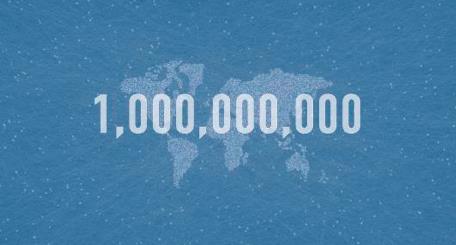 The equivalent of the Bat-Signal went out to the Facebook developer and business community in the form of F8. If anyone migrating to San Francisco last week thought that the big announcement was related to geo-location, they were far from correct. Facebook’s announcement was bigger. Much bigger. The company released their vision of the “Open Graph” that has the potential to make every web experience an individual, customized and social experience. In a nutshell, Facebook is socializing the internet in profound ways.
The equivalent of the Bat-Signal went out to the Facebook developer and business community in the form of F8. If anyone migrating to San Francisco last week thought that the big announcement was related to geo-location, they were far from correct. Facebook’s announcement was bigger. Much bigger. The company released their vision of the “Open Graph” that has the potential to make every web experience an individual, customized and social experience. In a nutshell, Facebook is socializing the internet in profound ways.
What exactly is the open graph? Facebook is your social graph because it maps out your friends. A life graph refers to the locations you’ve tracked from geo-location sites like Google Latitude. Basically, anything that maps out an aspect of your life can have a graph whether you’re tracking restaurants, music, movies, news, books, stores or hobbies. Facebook wants to connect all of these graphs together and bring a social element to every aspect of them too, which is bringing a social element to all of your web experiences (with potential to tap into non-web applications like TV and video games). As a user, the implications are vast. Some examples they shared at the conference include logging into Pandora and listening to music your friends like or checking out Yelp and seeing what restaurants your friends recommend.
Over 50,000 websites are already using the tools that Facebook released to make their websites more social. To see some that Facebook are showcasing click here. The tools are plug-ins that can easily be added to a website. The one that Facebook is pushing the most is the Like button which makes it possible to virtually “like” any piece of content on the web. When a user “likes” something, this action is featured in their friends’ Facebook stream and on the website where the action was taken place. By doing this and bringing in the ability to see which of a user’s Facebook friends have also liked content across the web, it makes the experience social. You can easily and quickly start by adding some of Facebook’s new plugins.
Maybe you’ve already invested a ton of energy and resources into building a community on a Facebook page (previously referred to as fan pages) and now you’re wondering what this means for you and your social media strategy. Here are some thoughts to chew on:
What this means for page admins:
- Your Facebook connections will grow. The new “Like” button which is replacing the “Become a fan” button will generate more connections (previously known as fans) due to less friction for a user to commit to endorsing your brand. Once a users connect with you on Facebook, you can stay top of mind and engage with the users by publishing content to their stream. This means that you will still be able to grow a community on Facebook and it’s absolutely crucial that you continue to engage with your connections through the stream on a regular basis.
- Make your website social. Facebook integration onto your website is paramount. Prior to F8’s announcements, the Facebook wave was very “Fan” Page-centric and there is now a shift back to the website. As the previous bullet point indicates, your connections will continue to grow on Facebook and what this shift means is that you have to apply social media practices to your entire web strategy. Make the social experience seamless on your website. The internet is moving in this direction. Get on board now. Your website and Facebook presence should compliment and support one another in this regard.
- Content, content, content. With the introduction of the “Like” button, customers will be able to “like” virtually any type of content online and their friends will be able to see these actions both on Facebook and on your website. This means that you need to give them content to like and share with their friends on Facebook. This will not only empower customers to spread your brand message among their friends, but it will ultimately drive awareness of your brand, regardless of where a user interacts with the content. The more content there is to share and like, it will be easier for customers to passively and actively endorse your brand to their friends.
- Your audience is king. The web is becoming more people-centric and catering to customers in the most personalized sense as possible through the semantic web. Online purchase decisions are going to be heavily influenced by users’ Facebook friends as the social web becomes the norm. You have to enter the conversation and engage with them in an open and transparent way, if not, the consequences could be detrimental. Your audience is on Facebook and will come to expect these social experiences. Get on board.
- Embrace the new terminology. Pages are no longer “fan pages” they’re referred to as just “Pages.” “Fans” are now referred to as “Connections.” You should update these terms in your marketing material and use them in your offline conversations as well. The idea of connecting with your customers fosters more of a two-way dialogue than asking someone to “fan” your brand. Since terminology does affect perception, connecting with your customers on Facebook is a good shift to embrace.
Let us know if you have any other thoughts on how Facebook’s announcements about the open graph will affect page admins.
Post written by Helen Todd aka @helenstravels. To learn more from fbadz.com, connect with us on Facebook!

